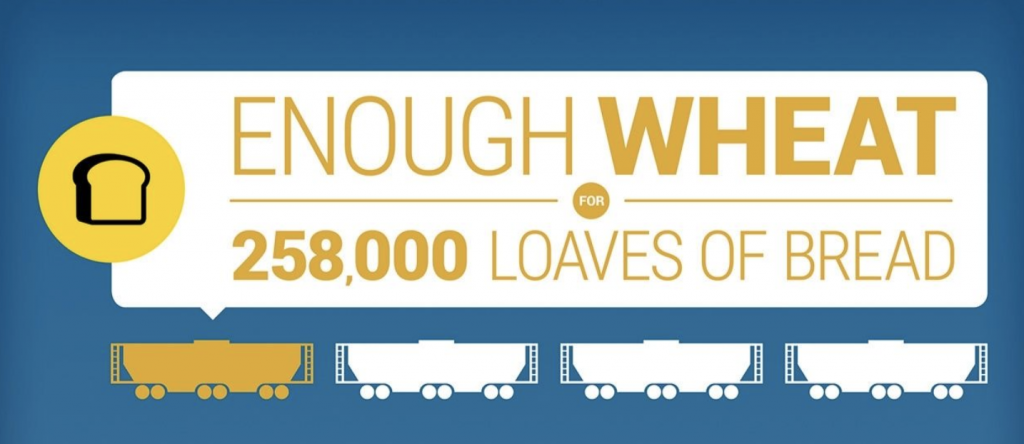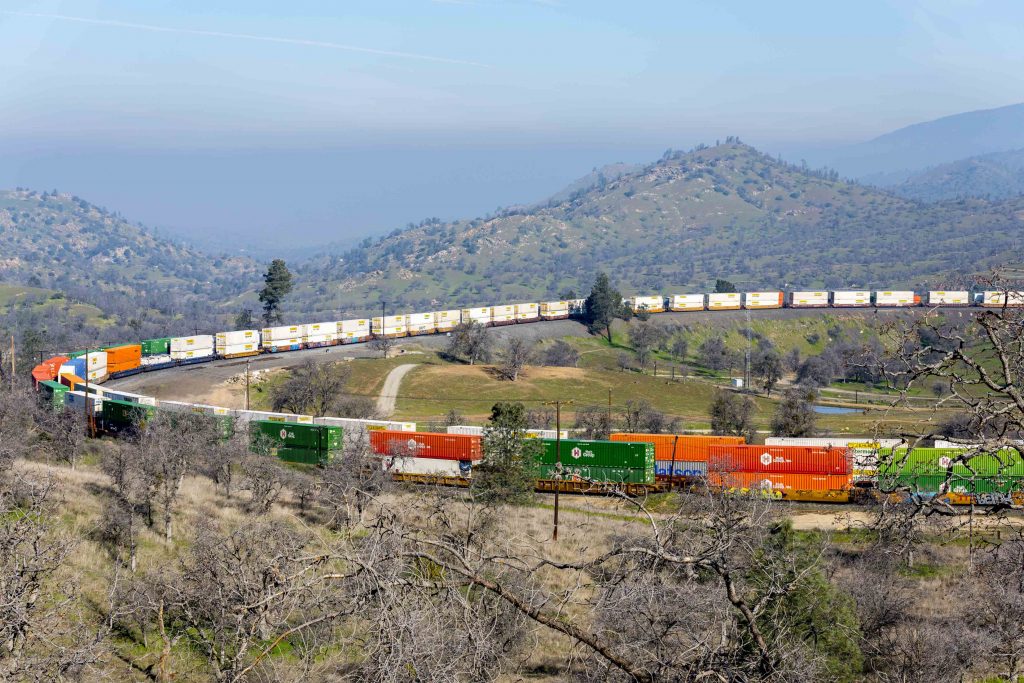Washington, D.C. — The allure of railroading in America is undeniable. It’s an intrinsic part of our nation’s history and identity—steel wheels on steel rail symbolizing progress, connection, and the American ethos.
1. They’re chugging along in the background 24/7 to power our daily lives.
Rail is a constant presence in American life, from the sound of a distant train whistle, to movies with a powerful train running in the background, to the dozens of children’s books that first introduce kids to “choo choos.”
Similarly, America’s freight railroads are a constant but often overlooked presence. They deliver the consumer staples that stock store shelves, the raw materials that keep manufacturers in production, the energy that heats our homes, the exports that keep America competitive abroad, and just about all the staples we rely on.
To put some stats behind it, railroads haul 40% of U.S. intercity freight—some 1.7 billion tons annually. It’s hard to fathom that kind of volume, especially when one single railcar can carry enough wheat for 258,000 loaves of bread!
Because America’s freight trains run on their own self-funded infrastructure, which is more “out-of-sight” than modes that interact with drivers and fliers on publicly-funded roads and runways, it’s easy to forget their central role in the supply chain that delivers 57 tons of goods, on average, per American every year. Even during the pandemic, railroads have continued to haul 24/7 without any government assistance.
Maybe it’s this quiet, steady self-reliance that resonates with us—making freight rail the natural symbol for the very American “I think I can; I know I can” spirit.
2. They run on the world’s best freight rail network.
Who doesn’t love a dramatic image of a train rising across a beautiful landscape? America’s colorful locomotives and railcars are an exciting sight as they bound down the rails, and the foundation on which they ride is just as impressive. At nearly 140,000 miles, the North American rail network has enough track to circle the earth nearly six times!
Not only is this network vast, it’s America’s highest rated infrastructure system, according to the American Society of Civil Engineers. They attribute this success to private railroads’ continued “significant capital investment.” Infrastructure is expensive after all, with freight rail companies reinvesting into their operations at about six times the rate of the average manufacturer.
Overall, freight railroads have churned $710 billion of their own money – not taxpayer dollars – back into the rail network since they were deregulated in 1980, with dramatic results. America’s freight rail network today is the best in the world as measured by safety, productivity and cost. Reliable rail infrastructure in turn powers economic growth at the local level by connecting businesses and customers.
So the infrastructure itself is just another reason to romanticize freight rail in America. You can read more here about a few feats of engineering across the rail network.
3. They’re both an emblem of American history and an engine for innovation.
Railroads helped build America, bridging a great divide both symbolically and literally. In fact, within 10 years of the completion of the Transcontinental Railroad in 1869, trains were moving $50 million worth of freight (nearly $1 billion in today’s dollars) coast to coast annually.
But this history is itself rooted in technological advancement, with railroads always forging ahead. Freight rail has shaped the country in ways we don’t always realize—from creating the first North American time zones to carving out towns and cities that still thrive today from rail connections. America’s freight railroads pioneered the use of barcodes and were among the first adopters of computer technology in the 1960s.
This innovative spirit continues today. State-of-the-art locomotives operate across tracks monitored by tens of thousands of smart sensors designed to identify problems before they happen. The train and hazmat accident rates have decreased 34% and 64% respectively in the last 20 years alone.
But the goal is zero accidents. To this end, railroads completed the full implementation of positive train control (PTC) at the end of 2020. The technology, designed to slow or stop a train in the event of human error, is just another exciting example of progress on the rails—one that will pay safety and efficiency dividends over the coming decades as freight demand continues to rise.
In the end, the romance of the rails might be hard to capture with a single rail fact or historical anecdote. For many rail lovers, it boils down to the power and the majesty of the Iron Horse as it traverses the American landscape, bringing with it connection and prosperity.





